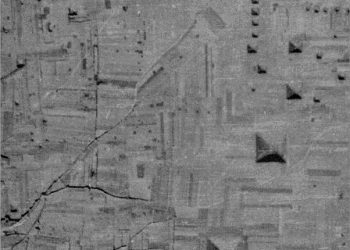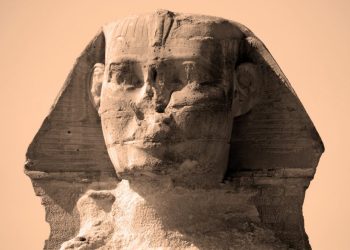The idea that the Great Pyramid of Giza was built by a “rudimentary” ancient civilization has created debate among experts for several decades. For some reason, it blows people’s minds to think that humans could create one of the most impressive buildings on the surface of the world thousands of years ago when the technology available to them was limited in many senses. Numerous theories have tried to explain how the Great Pyramid of Giza was built more than 4,500 years ago.
But despite the fact we’ve studied the Great Pyramid, its accompanying structures, and the Giza plateau, searching for clues along the way, we have still not understood how this was achieved. What type of transportation system did they use? What sort of tools did they make use of to quarry the stones? What’s the composition of the mortar used to build the pyramid? Countless questions related to the Pyramid-building process have remained unanswered despite our best effort to solve them.
But even though we may not know how the Great Pyramid of Giza was erected, we know that its builders were masters at what they did. The people in charge of making it possible for the pyramid to be built were some of the world’s most sophisticated planners, engineers, and builders. Hands down. And let me tell you why.
Canals, Nile, and transporting stones
Not long ago, we revealed one of the more important clues about how the massive stones used to build the pyramids were transported. Archaeologists exploring the vicinity of the Great Pyramid have discovered an intricate hydraulic engineering system that made it possible to build the Great Pyramid. This was revealed by Channel 4’s documentary series Egypt Great Pyramid: The New Evidence, where experts revealed how ancient engineers had to work on transforming the landscape by opening massive dikes that would successfully divert water from the Nile River and channel it to the pyramid through these artificial canals.
The idea was to transport the massive stones to the pyramid as closely as possible. The engineers had to alter the landscape and create canals that allowed the massive boats loaded with stones from distant quarries to get as close as possible to the building site. This tells us just how advanced and skillful the ancient engineers were at the time. Remember, we are talking about creating a massive pyramid unlike anything in the world, created more than 4,500 years ago.
Ancient Egyptian engineers, ahead of their time?
This means that during a time when Europe was in its early stages of development, the ancient builders of Egypt not only managed to erect a massive pyramid composed of 2.3 million stones weighing on average 3 tons, but they also re-engineered the landscape, turning into something that would work for them. In other words, the builders of the Pyramid built a complex hydraulic engineering system more than 4,500 years ago.
They built one of the most precisely aligned structures on Earth
But in addition to the above, its engineers and builders knew how to position the pyramid making it one of the most precise structures on Earth is just mind-boggling. It has been determined that the Great Pyramid was located at the exact center of the land mass on Earth. Furthermore, its builder ensured to engineer a structure unlike any other: The Great Pyramid of Giza is the only eight-sided pyramid. Experts believe that the Great Pyramid was the most accurately aligned structure on the planet’s surface, facing true north with only 3/60th of a degree of error.
The four faces of the pyramid are actually eight
The four faces of the Great Pyramid are slightly concave; it’s the only pyramid to have been built this way. This means that not only did the ancient builders erect one of the most precisely oriented buildings on Earth, but they also built one having a volume of 2,583,283 cubic meters. Many things about the pyramid changed when ITMO University (Russia) and the Laser Zentrum Hannover Germany studied the ancient structure.
Electromagnetic properties of the pyramid
Using methods of theoretical physics, the researchers investigated the electromagnetic response of the Great Pyramid to radio waves. Science Alert explains that “electromagnetic radiation, including visible light, radio waves, and microwaves, is radiating waves of oscillating electric and magnetic fields, and it’s all around us all the time.” The scientists proved that in the resonant state, the Great Pyramid could focus electromagnetic energy inside its rooms but also well beneath its base, where an incomplete chamber is located. Using multipole analysis, the scientists verified the scattered fields collected inside the pyramid’s chambers and beneath its base.
Did they know?
“Applications of modern physical methods and approaches for investigations of pyramids’ properties are important and productive,” the scientists explained in their paper. But even though experts argue that the builders of the pyramid did not know about these properties when the pyramid was finished, this sounds contradictory to many. If the ancients managed to erect what was once the tallest building on the surface of the planet and did so with limited technology, wouldn’t it be possible that they built the pyramid for a different, perhaps controversial purpose, one that does not relate to pyramids being burial chambers, but to pyramids being something more than ordinary buildings; energy-concentrating monuments?
Have something to add? Visit Curiosmos on Facebook. Join the discussion in our mobile Telegram group.











